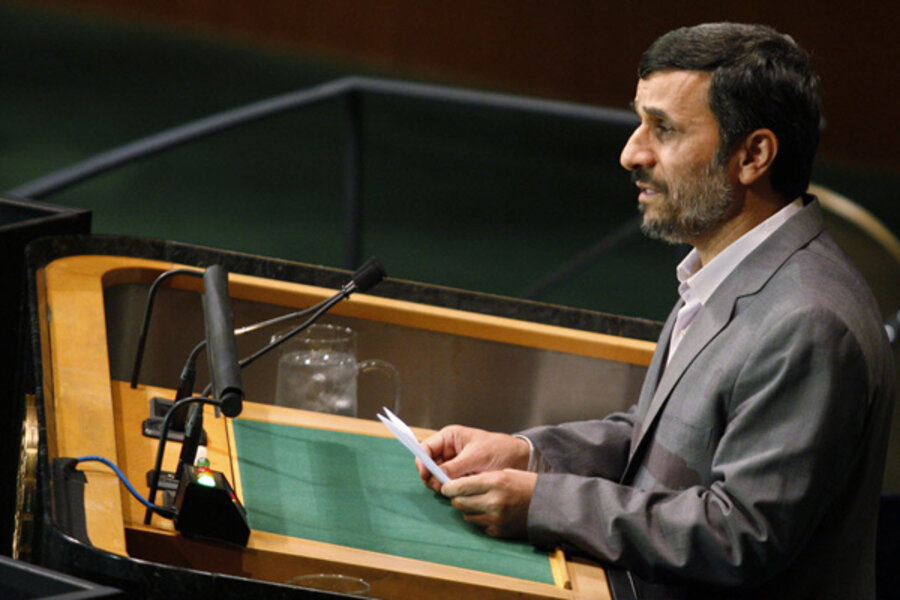Has Iran met its Millennium Development Goals?
Loading...
Iran may owe its international stardom to the controversy surrounding its nuclear program, but at the United Nations General Assembly this week, the world will focus on a different side of the Islamic Republic: Its domestic accomplishments.
Iranian President Mahmoud Ahmadinejad has shifted world alliances, pitchpoled the Middle East's power balance, and inherited Fidel Castro's fading mandate as the anti-leader of the Free World.
But what has he done for his people? Has he met the UN's Millennium Development Goals of reducing poverty and gender inequality while boosting access to education?
Middle East analyst Meir Javendanfar says the answer depends on how much confidence one holds in the statistics Mr. Ahmadinejad is toting to the UN summit this week.
Who's crunching the numbers?
Consider education: According to Iran's official math, the nation has boosted primary school enrollment to 94 percent, and turned a girl deficit in its schoolhouses to a girl surplus.
Yet the same UN that is fêting Iran's progress has also ranked Iran's brain drain rate as the world's highest. In Tehran and in the provinces, the dropout rate is increasing, Mr. Javendanfar notes – which is why he says "these numbers are suspect."
"The Iranian government has a tendency to play with the numbers," he says. "These numbers come with a wide margin of error.”
Iran's education system, he adds, blossomed immediately after the 1979 revolution, but suffered from waves of war and corruption in decades since.
Today, If Iran's women occupy more school desks than men, he says, it's likely because poverty is rising, yanking men back into the manual labor force.
Women faring better, with caveats
Schoolgirls aside, one group of Iranian women has undoubtedly benefited from the past 20 years: expectant mothers. Since 1990, Iran’s government says it has halved infant mortality and boosted maternal care from 86 percent to 97 percent of the population.
Javendanfar says that could be true, but the calculations mask rising healthcare costs in Iran. Analyst Geneive Abdo adds that it masks a larger question of Iran’s degrading women’s rights record.
“Yes, women are healthier, more educated, but if you look at what has happened since Ahmadinejad took office, there has been a systematic effort to place women back a couple decades,” she explains.
The country’s government is considering legislation that would significantly restrict the rights of women in their marriages.
If the proposition hasn’t heard much opposition inside the halls of government, Ms. Abdo says that’s because there aren’t many women inside the halls of government: Just 5 percent of the country’s representatives are women, despite a Millennium Development Goal to raise that higher.
“We’re not by any stretch of the imagination looking at the Taliban here,” Javendanfar says. “But the number of women in positions of power, despite their fantastic achievements in education, is unacceptably low. That’s because its a religious government, and it’s because Iran is still a macho society."
Women fare much better in Iran than in its neighbors, he stresses.
“But compared to where they should be, they have a lot further to go, and the government is responsible for that.”





